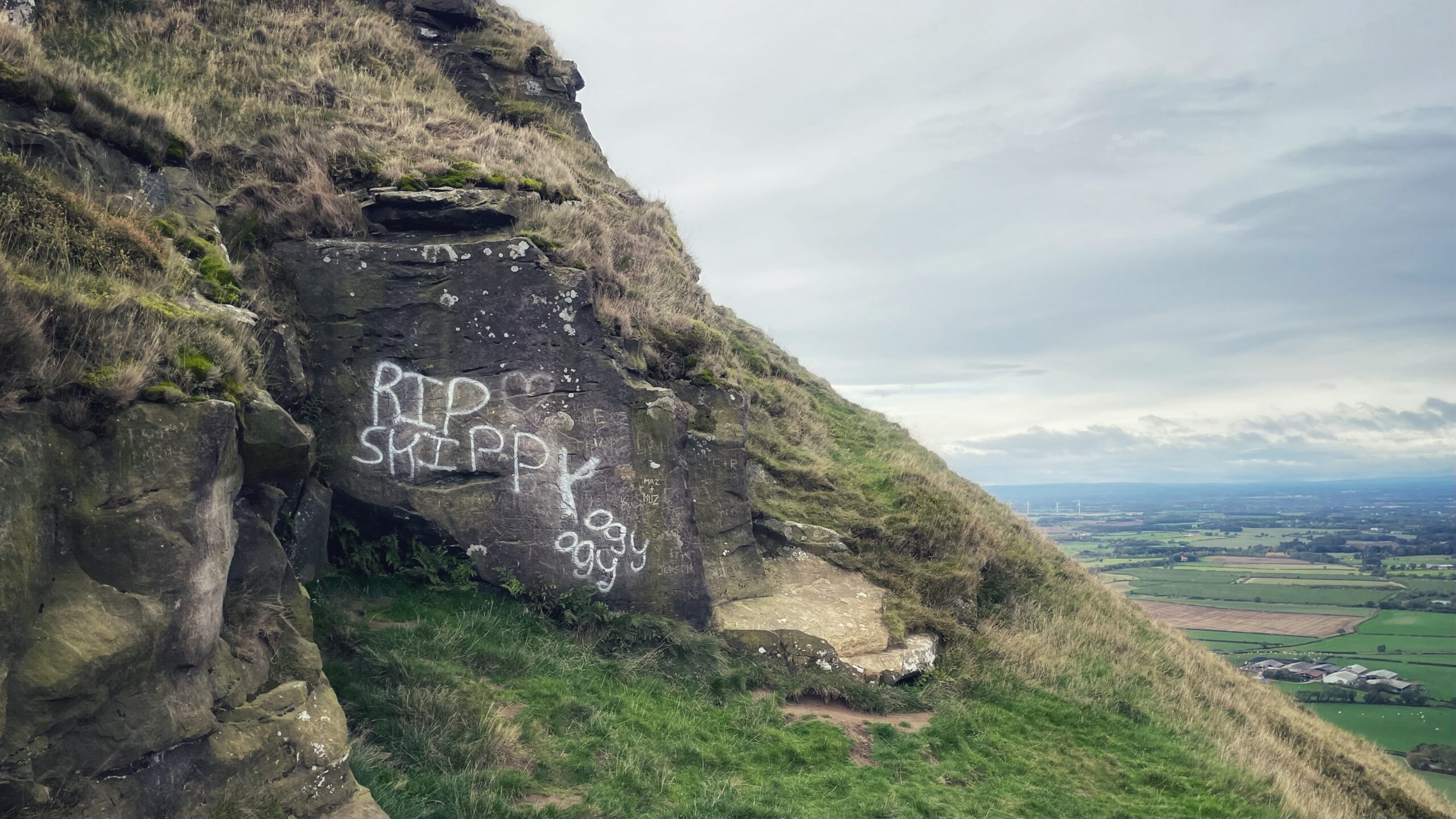Just below the summit of Roseberry Topping—a name that sounds like a pudding but is in fact Teesside’s iconic hill—there’s a large crag sandstone, rock that was laid down millions of years ago. The hill itself has only existed for twenty thousand or so, which makes it practically new money in geological terms. Moss and lichen crawl over the rock, nature’s version of interior design, unfolding at a pace that makes paint drying look impulsive.
From beyond the crag, the land spills away into a patchwork of fields and trees. Even under England’s default setting of a sulky grey sky, the view is stubbornly magnificent. In the distance, a few of Trump’s windmills twirl like polite reminders that even our most “natural” landscapes have been edited by human hands.
The climb is steep—steep enough to make someone pause, catch their breath, and apparently decide this is the perfect place for art. The result: “RIP SKIPPY” daubed in white spray paint, with a faded heart—the ghost of an earlier effort—and a couple of “oggy”s for good measure. Whether the tribute is to a departed friend or a particularly nimble kangaroo is anyone’s guess. Either way, Banksy’s influence has spread far and wide, and not always to the right people.

Leave a Reply